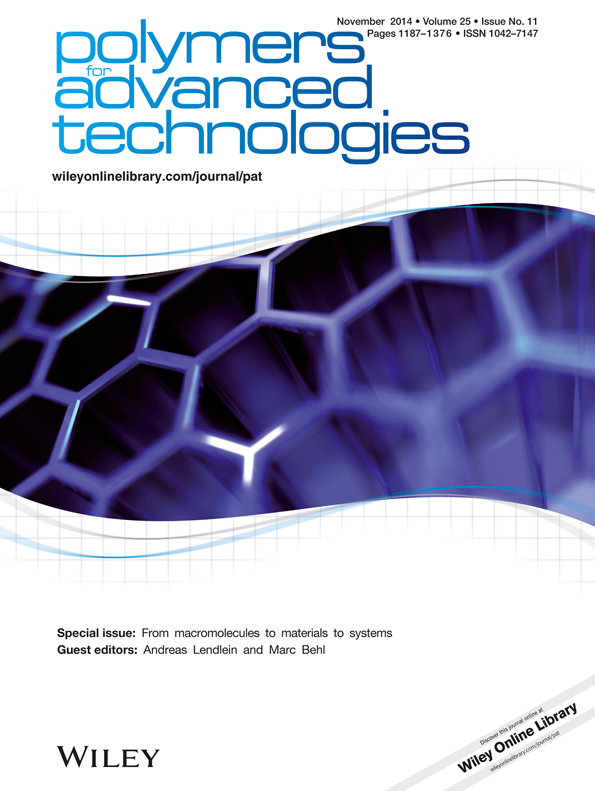An s-triazine briged silylalkyl sol–gel precursor—synthesis, structure and coating formation for electrical insulation of copper wire and corrosion protection of construction steel†
This article is published in Journal of Polymers for Advanced Technologies as a special issue on 12th PAT Conference in Berlin, 2013, edited by Prof. Andreas Lendlein and Prof. Marc Behl, Institute of Biomaterial Science, Helmholtz-Zentrum Geesthacht GmbH, Centre for Materials and Coastal Research, Kantstr. 55, 14513 Teltow, Germany.
Abstract
An aminoalkylalkoxysilane modified s-triazine was prepared and used as single-source precursor for hybrid coatings. These coating materials were applied and tested for the electrical insulation of fine copper wires and for corrosion protection of construction steel. The molecular precursor was comprehensively analyzed using FT-IR, 1H, 13C and 29Si NMR spectroscopy. Besides, the initial stages of hydrolysis and condensation reactions under acidic conditions were examined with solution 29Si NMR spectroscopy. Structures of gelled and heat-treated samples were analyzed with CP/MAS 29Si NMR and FT-IR spectroscopy. Sols were applied on fine copper wires using industrial coating and curing techniques. The performance of the hybrid coatings was characterized by electrical breakdown tests, pinhole tests and mechanical strength measurements. The anti-corrosion behavior of the s-triazine precursor derived coatings on steel substrates was studied by electrical impedance spectroscopy. The spectra were interpreted with respect to different hydrolysis and condensation rates, curing temperatures and coating thicknesses. Copyright © 2014 John Wiley & Sons, Ltd.




